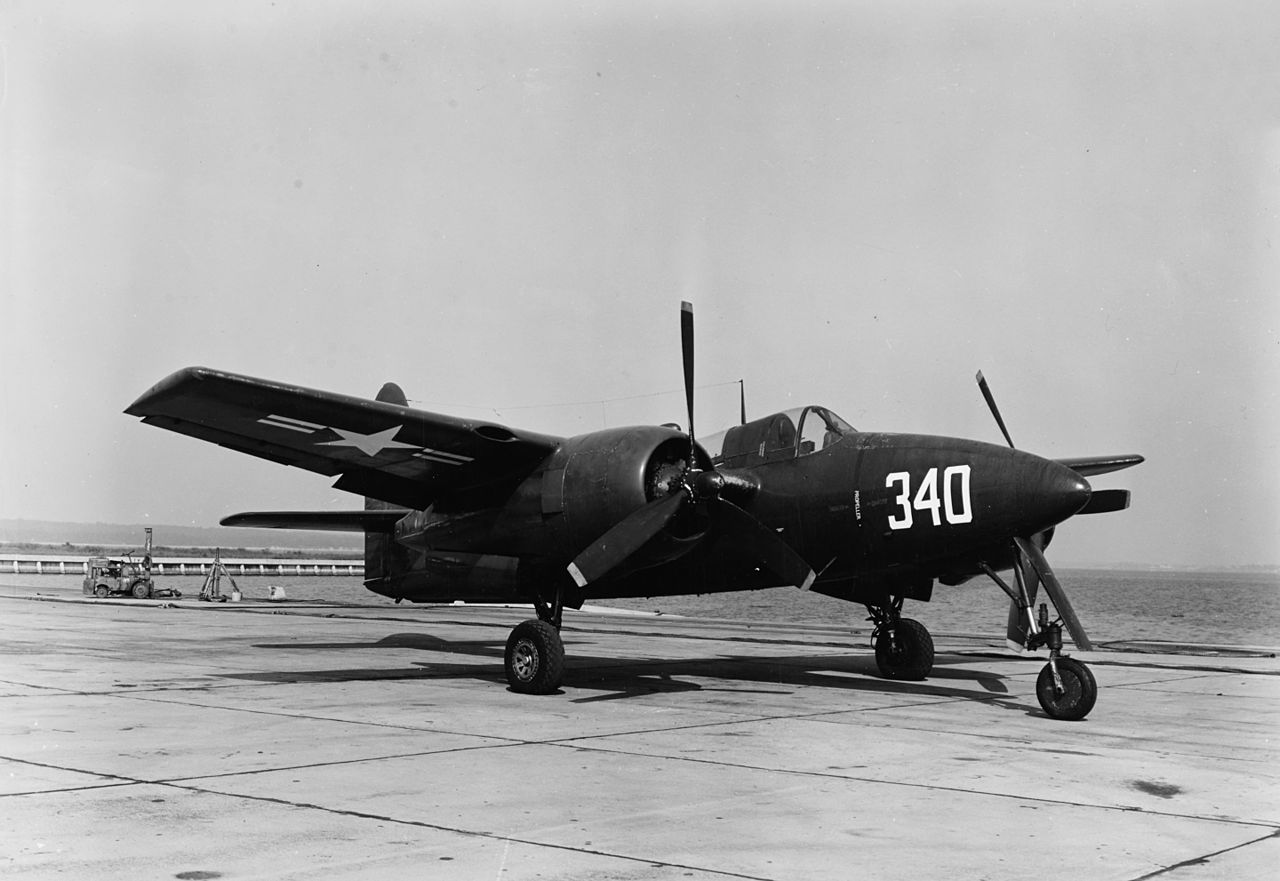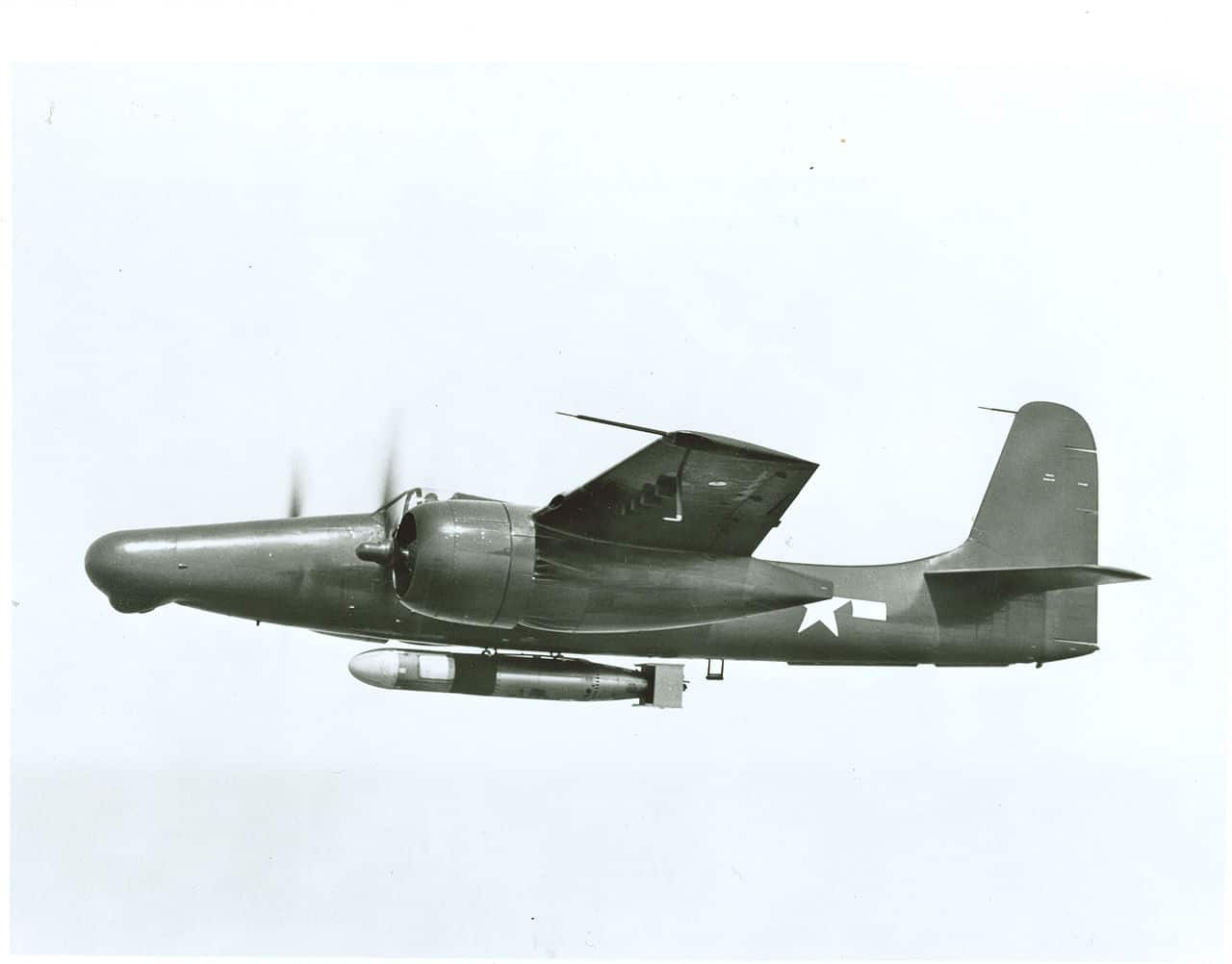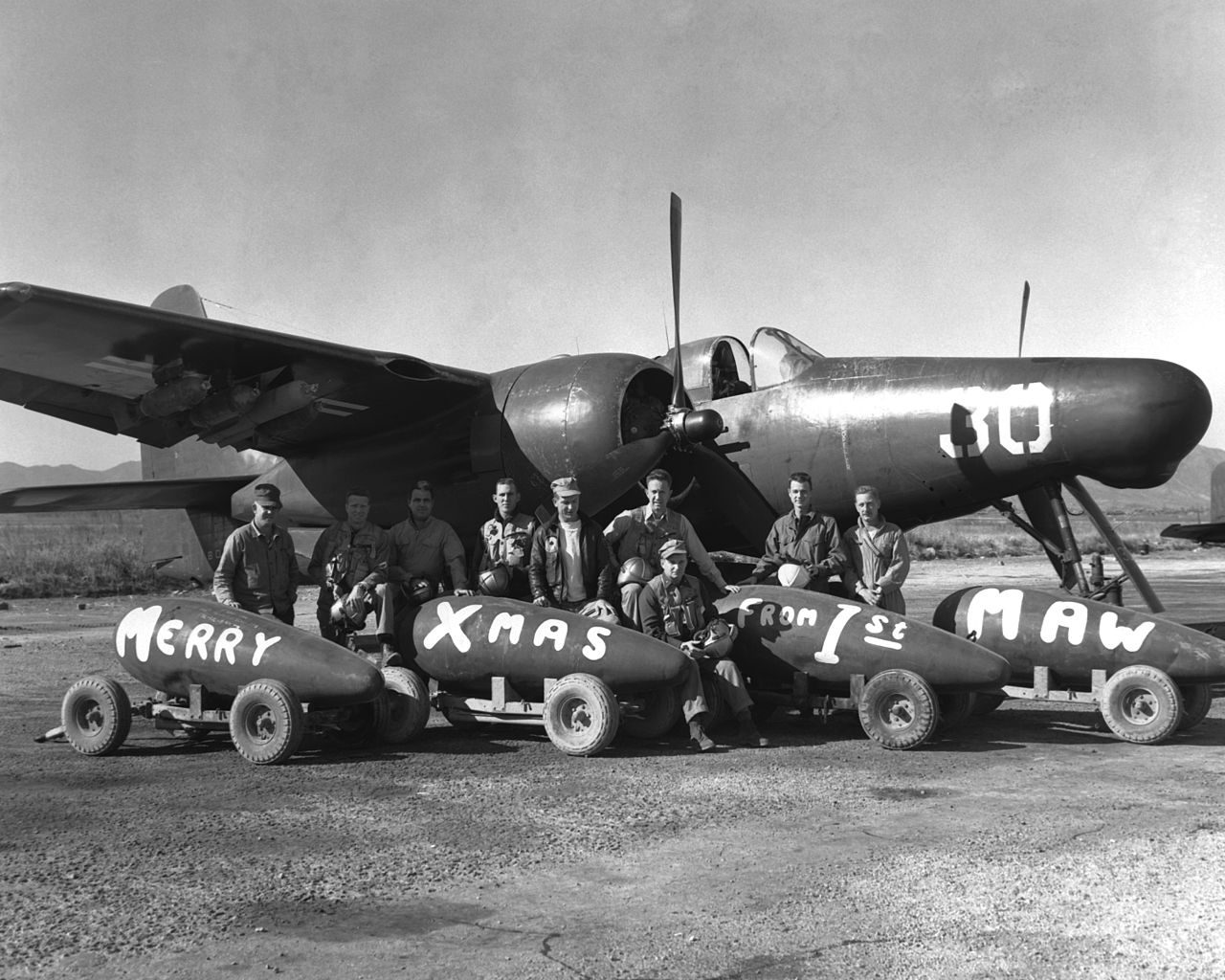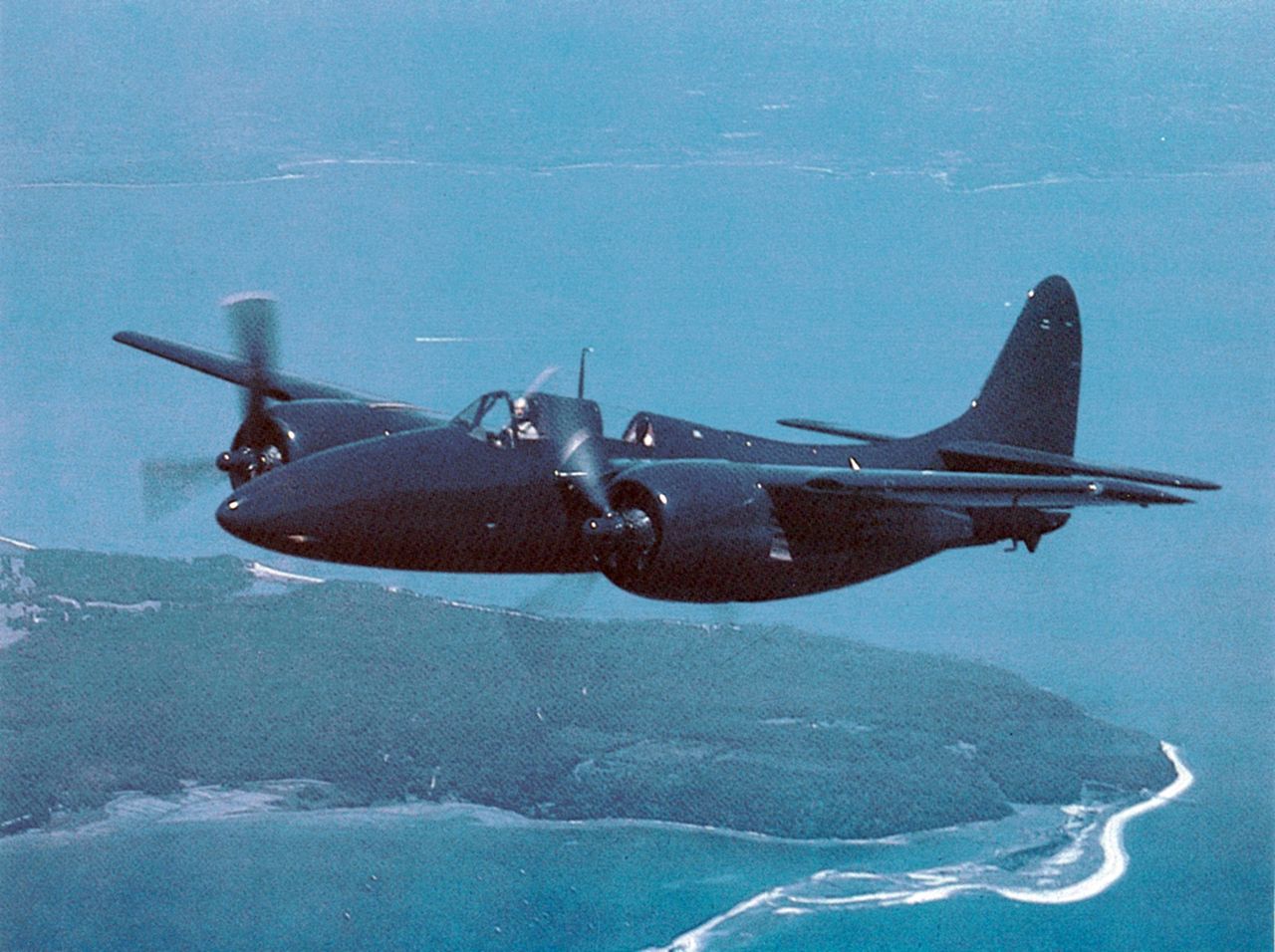With Performance To Burn and Armed Like a Battleship, The F7F was Limited to Land-Based Use for Most of its Service
World War II and postwar Grumman fighter aircraft were always named for cats. Wildcat, Hellcat, Bearcat, Panther, Cougar, Tiger, Tomcat…you get the idea. One of the lesser known but perhaps the most impressive of the Grumman cats was the F7F Tigercat. Developed during World War II as an escort or convoy fighter, the Tigercat was produced in small numbers but was one of the most aesthetically pleasing designs ever to come off the drafting tables at Grumman.

The First Tomcat
Grumman was granted a contract for the XF7F-1 Tomcat (yes…Tomcat) in June of 1941. The aircraft was designed to, according to Grumman, “outperform and outgun all existing fighter aircraft.” They drew a lithe and graceful looking twin piston-engined airframe that carried four wing root-mounted 20 millimeter cannons and four fuselage-mounted .50 caliber machine guns. They also designed in wing and fuselage hard points in order to mount rockets and bombs- even torpedoes.
And those twin engines were none other than the ultra-reliable and commonly available Pratt & Whitney R-2800 Double Wasp 2,100-horsepower radials turning three-bladed propellers. The Tigercat was the first carrier-based aircraft equipped with tricycle landing gear.

“The Best Damned Fighter”
Navy ace Test pilot Captain Fred Trapnell, who flew the F7F for the first time on 2 November 1943, remarked that it was the “best damned fighter” he had ever flown. The 4,200 available horsepower was said to provide excellent acceleration and short takeoff rolls on standard days. Even today, the performance of the Tigercat makes it a coveted warbird, competitive racer, and thrilling airshow performer. However, the twin engines, heavy armament, and inherent flexibility of the design also brought drawbacks.

The Drawbacks of a Sweet Design
Heavy weight, high approach and landing speeds…not conducive to carrier operations- even from the envisioned Midway-class super carriers. Although the Tigercat was 71 miles per hour faster at sea level than the gold standard of the day —the Grumman F6F Hellcat —it would be a challenge to operate them from flat-tops. Fairly early during development, the name of the aircraft was changed to Tigercat.
The Tomcat moniker would be used for the Grumman F-14- the next twin-engine Grumman Naval fighter aircraft. Deliveries of F7Fs began in mid-1944, but the aircraft did not see combat before the end of the war.

Not the Best Damned Fighter for Carriers
Although the F7F was heavy and fast on approach, it failed carrier suitability testing due to poor single-engine directional stability and tailhook design issues.
Many production F7F-1Ns and F7F-2Ns were fitted with the Sperry APS-6 intercept radar and utilized by the Marine Corps from land bases. F7F-2Ns also carried a dedicated radar operator. The F7F-3 variant was powered by uprated R-2800-34W engines and modified to address the initial carrier suitability issues; however, it also failed due to wing structure and loading problems. However, F7F-3s were built and used as single-seat day fighter-bombers (F7F-3), two-seat night fighters (F7F-3N), photographic reconnaissance aircraft (F7F-3P), and electronic warfare variants (F7F-3E).

Not Exactly a Huge Victory Tally
Operationally, the Tigercat saw combat during the Korean War with Marine Corps Night Fighter Squadron VMF(N)-513 Flying Nightmares. Their F7F-3N Tigercats flew night interdiction, night interceptor, and day fighter missions early in the war. The Flying Nightmares shot down a pair of North Korean Polikarpov Po-2 biplanes during their combat in Korea. However, these were the only aircraft shot down by VMF(N)-513, and they were the only squadron to see combat in Korea.

Improvements Came Too Late
By the time the F7F-4N two-seat night fighter model was introduced, it had been sufficiently upgraded to pass carrier suitability trials. However, by then, Grumman was already focused on its next generation of fighters – jets like the F9F Panther. The F7F-4N was the final variant of the Tigercat and a carrier-based two-seat night fighter. However, of the 364 Tigercats completed when production ended in 1946, only 13 were F7F-4N models. Many of the remaining F7Fs were used as drone control aircraft, and several flew as fire-bombers primarily during the 1960s and 1970s. Today, there are at least seven Tigercats flying in civilian hands and several others on static display.

BONUS VIDEO
Here’s a video of a gorgeous restored warbird F7F uploaded by none other than Planes of Fame
